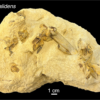In recent years, engineers have created a variety of solar technologies using different types of materials. These include solar cells based on cadmium telluride (CdTe), a stable crystalline semiconducting compound comprised of cadmium and tellurium.
CdTe-based solar cells can often generate electricity at a relative low cost. These cells typically benefit from many processes, including fast CdTe absorber deposition, CdCl2 treatment and copper (Cu) doping.
Doping is the process through which impurities are introduced into a semiconductor to modulate some of its properties. As suggested by its name, Cu doping occurs when a material is doped using copper. While many CdTe-based solar cells undergo Cu doping, this process can sometimes lead to low photovoltage and electrical instability.
To overcome the known limitations of Cu doping, some engineers have been trying to dope CdTe using group V elements instead. Many high-temperature, in situ group V-doped CdSeTe solar devices achieved satisfying results, for instance exhibiting efficiencies above 20%. Nonetheless, these devices can also have their own limitations and challenges.
Researchers at University of Toledo and University of Alabama have recently realized the low-temperature and effective ex situ group V doping of CdSeTe solar cells. Their paper, published in Nature Energy, could pave the way towards the development of better performing group V-doped CdSeTe solar technologies.
“Although high-temperature in situ groupV doped CdSeTe devices have demonstrated efficiencies exceeding 20%, they face obstacles including post-deposition doping activation processes, short carrier lifetimes and low activation ratios,” the researchers who carried out the study wrote in their paper. “We demonstrate low-temperature and effective ex situ group V doping for CdSeTe solar cells using group V chlorides.”
Essentially, Deng-Bing Li and his colleagues at University of Toledo and University of Alabama doped their CdSeTe solar cells using a series of group V highly ionic materials, namely group V chlorides. These chlorides included PCl3, AsCl3, SbCl3 and BiCl3.
The solar cells created by the researchers achieved remarkable results, in terms of efficiencies, carrier lifetimes and dopant activation ratios. Moreover, they compared very favorably with existing Cu-doped CdTe-based solar cells.
“For AsCl3 doped CdSeTe solar cells, the dopant activation ratio can be 5.88%, hole densities reach >2×1015cm-3 and carrier lifetime is longer than 20ns,” the researchers wrote in their paper. “Thus, ex situ As doped CdSeTe solar cells show open-circuit voltages of -863mV, compared to the highest open-circuit voltage of 852mV for Cu doped CdSeTe solar cells.”
The group V diffusion doping process that this team of researchers applied to their solar cells is low-cost and can be implemented at low temperatures. In addition, it closely resembles more conventional Cu doping processes, thus it should be easy to implement across existing solar cell manufacturing facilities.
In the future, the recent paper published in Nature Energy could inspire other research teams worldwide to devise and evaluate similar group V doping strategies. Ultimately, it could thus aid the development of a wide range of competitive and highly efficient CdTe-based solar cells.
Paving the way to artificial photosynthesis: Effect of doping on the photocatalyst SrTiO3
More information:
Low-temperature and effective ex situ group V doping for efficient polycrystalline CdSeTe solar cells. Nature Energy(2021). DOI: 10.1038/s41560-021-00848-z.
2021 Science X Network
Citation:
Researchers demonstrate low-temperature and effective ex situ group V doping of polycrystalline solar cells (2021, July 13)
retrieved 13 July 2021
from https://techxplore.com/news/2021-07-low-temperature-effective-situ-group-doping.html
This document is subject to copyright. Apart from any fair dealing for the purpose of private study or research, no
part may be reproduced without the written permission. The content is provided for information purposes only.



